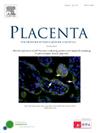Impact of placenta-derived extracellular vesicles on endothelial function in supraphysiological maternal hypercholesterolemia
IF 2.5
2区 医学
Q2 DEVELOPMENTAL BIOLOGY
引用次数: 0
Abstract
Maternal physiological hypercholesterolemia (MPH; total cholesterol (TC)≤280 mg/dL) occurs during pregnancy to support fetal growth. When TC exceeds this threshold, this condition is recognized as maternal supraphysiological hypercholesterolemia (MSPH), which is associated with endothelial dysfunction in the maternal and fetoplacental vasculature. Placenta-derived extracellular vesicles (EVs), which mediate intercellular communication during pregnancy, may contribute to MSPH by affecting endothelial cells.
Aim
To characterize EVs isolated from MPH and MSPH term placentas and assess their effects on endothelial function in vitro.
Methods
EVs from term MPH (n = 10) and MSPH (n = 10) placental explants were purified by differential ultracentrifugation. EVs were characterized by nanoparticle tracking analysis (NTA), transmission electron microscopy, and analysis of protein markers and content. MPH- and MSPH-EVs were labeled to assess their uptake by endothelial cells (HMEC-1). Their effects on angiogenesis, endothelial activation, endothelial nitric oxide (NO) synthase (eNOS) protein expression and NO levels were evaluated.
Results
The concentration and morphology of placental EVs from MPH and MSPH were comparable. When HMEC-1 were exposed to placenta-derived EVs, MSPH-EVs increased angiogenic capacity. Intercellular adhesion molecule-1 (ICAM-1) expression was induced regardless of whether vesicles were originated from MPH or MSPH placentas. No differences were observed in eNOS expression or NO production when cells were incubated with placenta-derived EVs from both conditions.
Conclusion
In our in vitro model, MSPH placenta-derived EVs adjusted angiogenesis but did not alter eNOS expression or activity in endothelial cells. Our findings suggest that placental EVs could have a protective role in the NO-associated endothelial dysfunction described in MSPH pregnancies.
胎盘来源的细胞外囊泡对生理上高胆固醇血症孕妇内皮功能的影响
母亲生理性高胆固醇血症(MPH;总胆固醇(TC)≤280 mg/dL)发生在妊娠期间,以支持胎儿生长。当TC超过这个阈值时,这种情况被认为是母体生理上高胆固醇血症(MSPH),这与母体和胎儿胎盘血管内皮功能障碍有关。妊娠期间介导细胞间通讯的胎盘源性细胞外囊泡(EVs)可能通过影响内皮细胞而导致MSPH。目的研究从MPH和MSPH足月胎盘中分离的ev,并评价其对内皮功能的影响。方法采用差动超离心法纯化足月MPH (n = 10)和MSPH (n = 10)胎盘外植体的sev。采用纳米颗粒跟踪分析(NTA)、透射电镜、蛋白质标记物及含量分析等方法对ev进行表征。对MPH-和msph - ev进行标记,以评估内皮细胞对它们的摄取(HMEC-1)。观察其对血管生成、内皮细胞活化、内皮细胞一氧化氮合成酶(eNOS)蛋白表达及一氧化氮水平的影响。结果两组胎盘EVs的浓度和形态具有可比性。当HMEC-1暴露于胎盘源性ev时,msph - ev增加了血管生成能力。细胞间粘附分子-1 (ICAM-1)表达被诱导,无论囊泡是来自MPH还是MSPH胎盘。两种情况下,细胞与胎盘源性ev孵育后,eNOS的表达和No的产生均无差异。结论在我们的体外模型中,MSPH胎盘源性ev调节血管生成,但不改变内皮细胞中eNOS的表达或活性。我们的研究结果表明,胎盘EVs可能对MSPH妊娠中no相关的内皮功能障碍具有保护作用。
本文章由计算机程序翻译,如有差异,请以英文原文为准。
求助全文
约1分钟内获得全文
求助全文
来源期刊

Placenta
医学-发育生物学
CiteScore
6.30
自引率
10.50%
发文量
391
审稿时长
78 days
期刊介绍:
Placenta publishes high-quality original articles and invited topical reviews on all aspects of human and animal placentation, and the interactions between the mother, the placenta and fetal development. Topics covered include evolution, development, genetics and epigenetics, stem cells, metabolism, transport, immunology, pathology, pharmacology, cell and molecular biology, and developmental programming. The Editors welcome studies on implantation and the endometrium, comparative placentation, the uterine and umbilical circulations, the relationship between fetal and placental development, clinical aspects of altered placental development or function, the placental membranes, the influence of paternal factors on placental development or function, and the assessment of biomarkers of placental disorders.
 求助内容:
求助内容: 应助结果提醒方式:
应助结果提醒方式:


